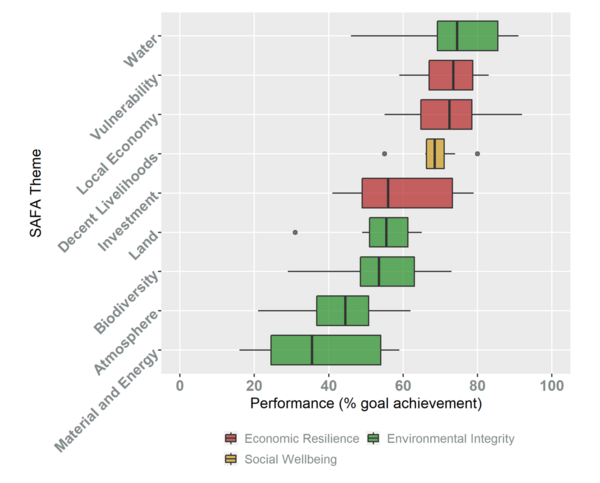The global agricultural sector is facing a sustainability crisis. This includes the overuse of agro-industrial inputs, rising greenhouse gas emissions, degraded soils, poor working conditions and loss of livelihoods. A key strategy to achieve a systemic change in our food systems is to provide decision-support and key information to relevant actors in agricultural supply chains. By supporting the identification of sustainability hotspots and evaluating options for improvement, farm-based “Sustainability Assessment Tools” (SATs) can help a range of actors and decision-makers become more sustainable. SATs help farmers assess their own performance and make better management decisions. They can also be used by extension agents, intermediaries or retailers to evaluate the performance of whole producer groups.
One aim of the DiverIMPACTS project was to evaluate the farm-level benefits of diversification using a SAT. The “SMART-Diversification Tool” was developed to meet this goal, in collaboration with selected case studies for testing and applications. Indicators were drawn from the “SMART-Farm Tool”, which was developed and is maintained by FiBL (see link below for more information). The SMART-Diversification Tool first assesses the level of diversification of the farm along five main diversification strategies: product, market, structural, crop and livestock diversification. These scores are then contrasted with sustainability performance across nine “sustainability themes”: five environmental, three economic and one social. The tool was tested in five case studies and ten farms in the DiverIMPACTS network. This greatly benefited tool development by offering a diverse testing ground across farm and regional contexts. Feedback from farmers and case study leaders led to targeted improvements to better meet expectations (e.g. new or revised indicators, benchmarking to local conditions and transparent reporting of results).
Results across the case studies show an overall broad range of performance across themes (Figure 1). However, the ranking of themes was similar across farms, indicating common challenges that are likely shared by many EU farms: resource and energy dependency, atmospheric impacts and GHG emissions, followed by other environmental concerns (biodiversity, land management), and then economic and social issues, which tend to score best overall. At the level of individual indicators, key diversification practices emerged as influential on overall performance, including good soil management (cover and catch crops, organic fertilizers, residues), diversification of marketing channels, crop rotation length and the cultivation of rare/endangered crops. In terms of sustainability performance, key environmental indicators were the application rate of nitrogen fertilizers, water consumption and habitat connectivity/complexity. Socio-economic indicators were farm equity level (degree of ownership), access to credit, staff training level and turnover rate.
These preliminary results from a small number of farms show the value of such a tool for identifying strengths and weaknesses across farms and in highlighting influential indicators, such as those of farm diversification. It is hoped that the SMART-Diversification Tool will be further developed and applied in future research. It will be freely available and hosted on the DiverIMPACTS Zenodo platform, consisting of data input files (Microsoft Excel, Open Office Calc) and the associated RMarkdown script for report generation (basic knowledge of the R programming language is required).
Further information
- fibl.org: SMART – Sustainability Assessments in the Food and Agriculture Sector
- sustainable-food-systems.com: Holistic Sustainability Assessment with SMART

 toccare e scorrere fino al comando Aggiungi alla schermata iniziale.
toccare e scorrere fino al comando Aggiungi alla schermata iniziale.